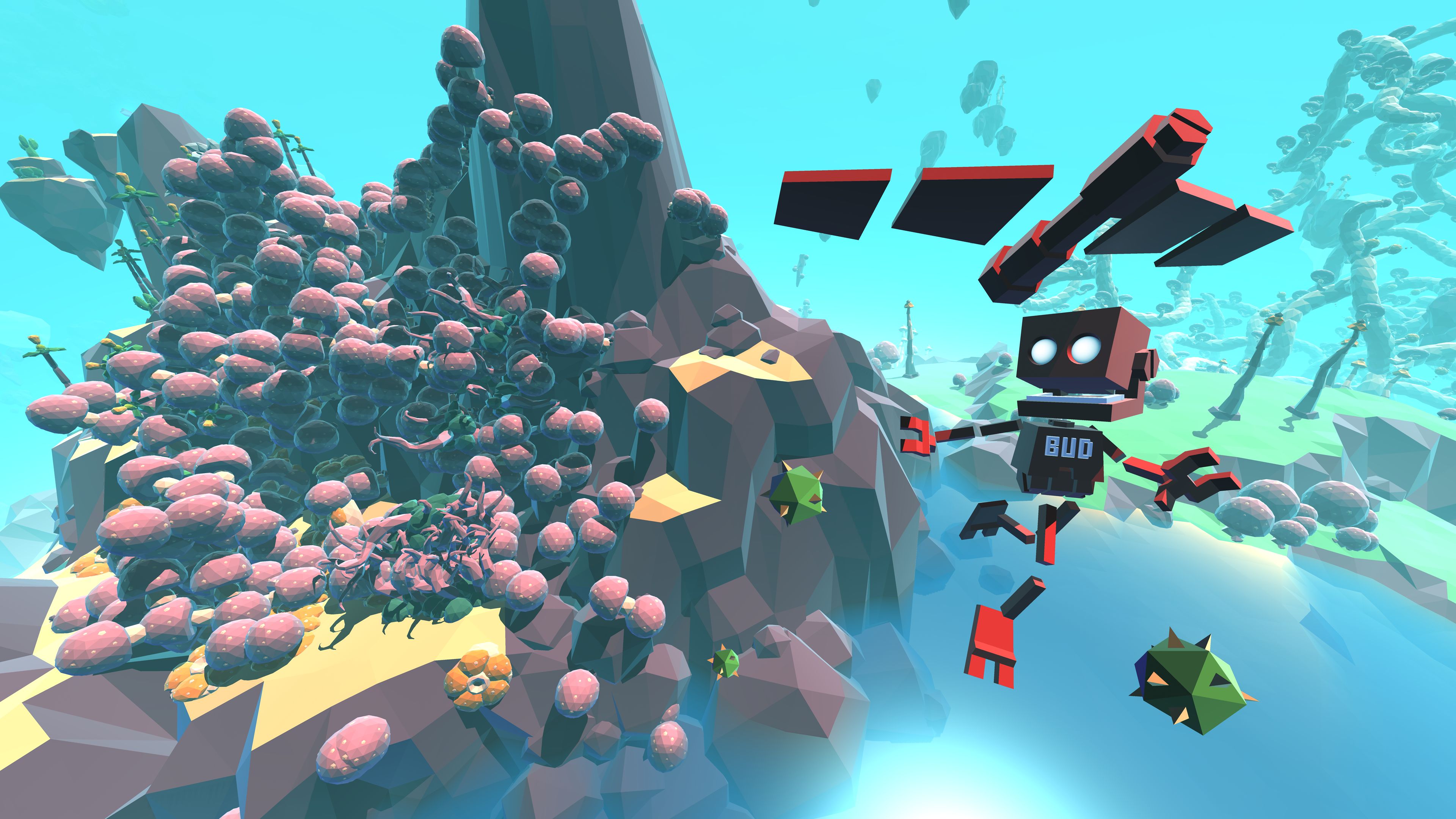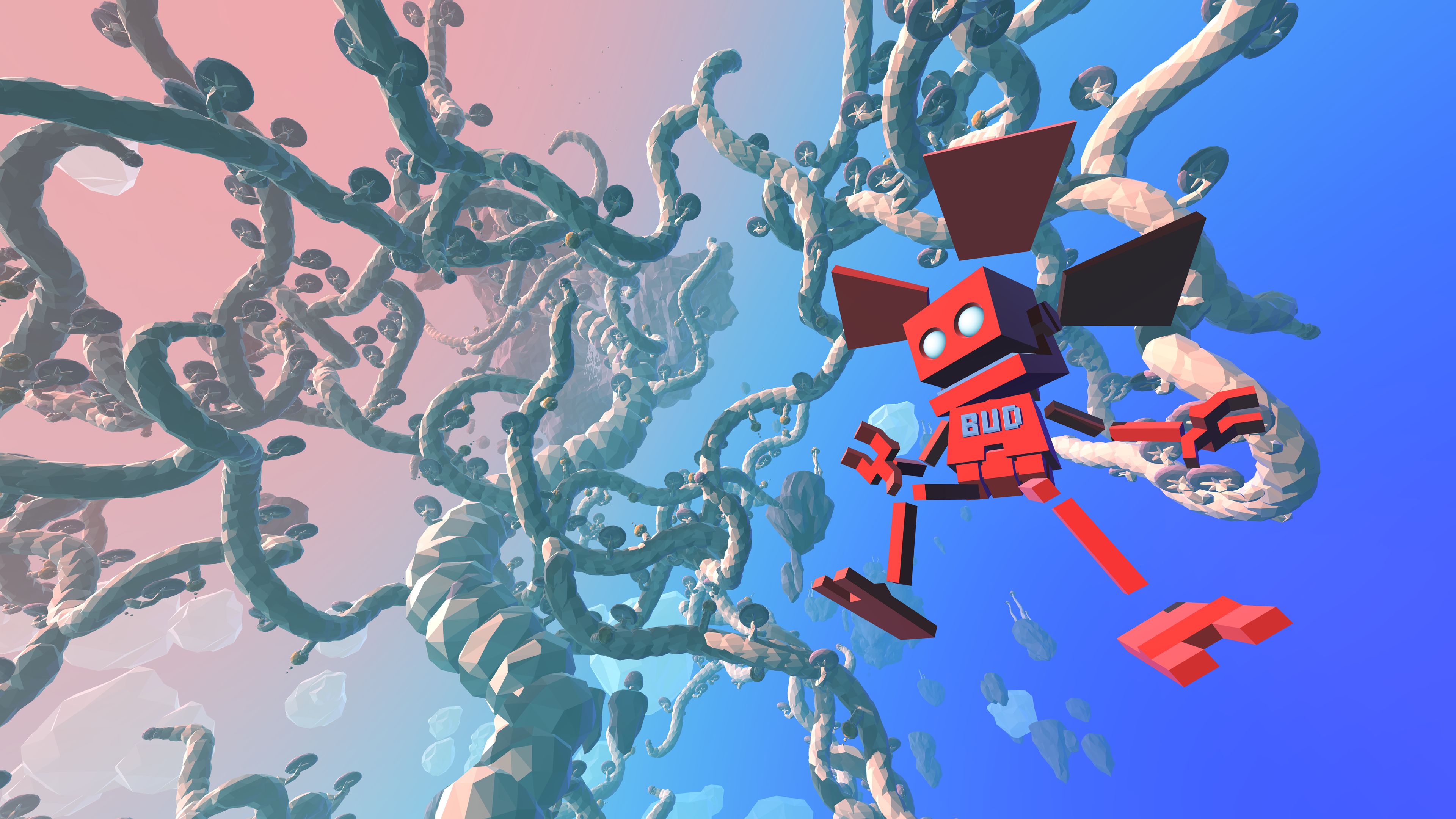Grow Up takes Bud the robot to new frontiers
Reflections takes its experimental platformer to new heights.

Grow Home is a joyous, charming platformer that feels like an indie game, but is in fact a side project created by a small team at Ubisoft Reflections. It was released with barely any fanfare, but has developed a devoted following for its brilliantly tactile climbing and physics-based platforming. “We were overwhelmed by the positivity,” says producer Pete Young. “There was no big marketing push behind it. We just put it out there.”
It started life as an experiment in procedural animation by a physics programmer, eventually becoming a proper game. “At first all he could do was walk, but then we gave him arms and wondered what it would be like if he could grab stuff, and it grew from there.”
People liked it enough that Ubisoft are bankrolling a sequel, Grow Up. In the first game robot hero BUD had to grow and climb a massive star plant to reach a spaceship floating high above the atmosphere. It was all about going up, but now the action takes place across an entire planet.

“We wanted to expand on the vertical experience of Grow Home and make it much more horizontal,” says Young. “That’s where the idea of the planet came from. We started expanding outwards, but we didn’t want to have an invisible wall around the ‘end’ of the world. So we started folding it over.”
To make up for the vastly bigger—and higher—play space, BUD has a selection of new gadgets including a jet-powered glider and the ability to curl up into a ball to protect himself from fall damage. His weighty, physics-driven movement feels exactly the same as it did before, but these new tools make getting around much easier—and faster.
“The first thirty minutes or so will be all about climbing, just like in the first game,” says Young. “But then you’ll get the jetpack really early, which gives you a bit more control over your jumps. And soon after that we’ll give you the air brakes to catch you when you’re falling.”
Young wants you to feel more confident more quickly this time. “In Grow Home the early stages are about the tension of climbing,” he says. “But about halfway through you begin to feel like you’re mastering it, being braver when you take big jumps, grabbing things as you fall, using the jetpack. And we want to encourage more of that acrobatic style of play this time."
Keep up to date with the most important stories and the best deals, as picked by the PC Gamer team.

Despite the planetary setting, it’s still ultimately a game about going up. The planet has its own star plants, the design of which depends on the particular biome you’re in. “You start off in a temperate zone. Then you might end up in the desert or tropical area next. In the temperate zone you can bounce on fungi growing on the star plant, while in the tropical zone there are dangling tendrils that fling you into the air when you grab them.
This time BUD’s trying to reach a moon floating above the planet, which will involve growing those star plants again. “We needed to keep a simple, identifiable goal,” says Young. “In the first game it was reaching the ship, now it’s reaching the moon.” Along the way you can collect and catalogue the weird plants and flowers on the planet, some of which can be used to your advantage, like grabbing hold of them as they shoot into the air.
I’m glad Reflections hasn’t tinkered with the basics of BUD’s movement much, because it was pretty much perfect to begin with. Instead, they’ve dramatically expanded his polygonal playground and given him more interesting ways to navigate it, which is all a sequel really needed.
Grow Home is quietly one of the best 3D platformers on PC, and I’m delighted it’s getting a sequel. It’s clear it’s a passion project, and it’s great to see publishing giants like Ubisoft giving its developers the time and resources to make cool, weird stuff like it on the side.
If it’s set in space, Andy will probably write about it. He loves sci-fi, adventure games, taking screenshots, Twin Peaks, weird sims, Alien: Isolation, and anything with a good story.


